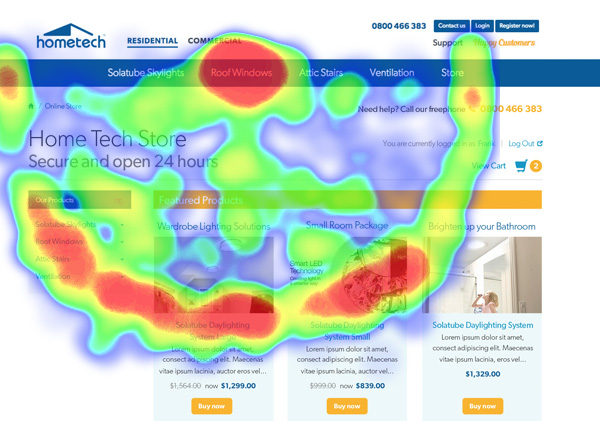Understanding how people use your product is vital if you want to achieve high user satisfaction.
The best way to find this out is by talking to users and watching them interact with your product. This process, called user testing, is one of the simplest and most effective ways of increasing the growth and profitability, and overall UX design of your website.
If your online presence helps people achieve their goal, they will continue to use it, and they will recommend it to others. User testing helps you understand how people use your product and for what purpose. Do they use it for the same objective you had in mind when you designed it? Do they get the maximum value out of it, and if not, why not? Even if they achieve their ultimate goal, are they happy, or are they frustrated?

Somar has had extensive experience with user testing, and we offer a variety of different options for our clients. One thing we have learnt is:
There’s no such thing as an average user. Your products will be used predominantly by particular groups of people, and you need to get to know them. We create personas - which are representations of the different types of users on your site. The personas have specific expectations for your site and certain relevant characteristics (such as gender, age, tech proficiency, purpose, etc.).
Once you have your personas designed, you can enlist the help of the people you want to participate in your user tests, which ideally are individuals with the same characteristics as the personas.
Your testing group should be sized depending on the scale and complexity of the website. We recommend the number of users be anywhere between 5 to 50 for an accurate response. Somar will then work with you to create a list of tasks that the participants will perform to test the key areas in question.
Once we have our task list, Somar then completes the user testing using one, or a combination of the following processes:
In-house Testing
Somar has an in-house testing laboratory which includes state of the art eye-tracking technology, which monitors what the user is looking at on the screen while also recording their mouse cursor movements. Looking at your user’s behaviour when completing tasks given to them reveals a wealth of information about how users approach your site.

Guerilla Testing
For sites with a large number of mobile users, Somar can perform user testing where we approach members of the public around the Wellington CBD (or relevant locations), with mobile-ready prototypes of the website. To test the Metlink site, for example, we spoke to Wellingtonians at bus stops or the train station (public transport users) and asked if they would like to participate. To thank them for their time, we offered grocery vouchers, which was a cost effective way of recruiting random user groups.
Cloud-based Testing
Another way in which Somar can perform user testing is via online, cloud-based platforms. Somar commonly use UserTesting.com and Optimal Workshop, which provide us with a cost-effective suite of usability tools, like Card Sorting and A-B Testing. These tools monitor and improve aspects of your website - for example, how easy it is to navigate your site, or where most users are ending up before leaving your site.
Conclusion
Somar believe in testing early on in the website design phase, to ensure that the end product is a representation of what your audience wants; a process known as user-centric design. We also believe in testing whenever new functionality or design iterations are rolled out on an existing website.
User testing doesn’t need to be overly expensive, or time consuming - but it can offer a huge amount of external insight into your online presence. It can identify obstacles and user confusion that automated analytics tools such as Google Analytics often fail to explain. Talk to us about how user testing can help you.




